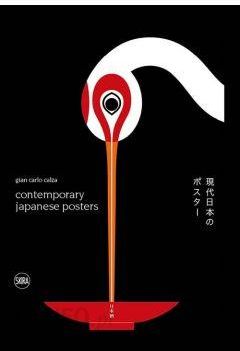Opis
This book brings together the best of Japanese graphic design in the posters that accompanied Japan from the 1964 Tokyo Olympics to the creation of the Issey Miyake logo, and from the Osaka Expo to the official poster for the Pan-Pacific Design Congress. Ken’ya Hara was born in the province of Okyama in 1958. After graduating from the Department of Design at Musashino Art University in 1981 and obtaining his M.A. in 1983, he joined the Nippon Design Center where he established the Hara Design Institute in 1992.Yusaku Kamekura was born in Kanbara in 1915. He is considered to be the figure who contributed most to the spread of Japanese graphic design in the post-WWII period. He graduated with a degree in architecture and industrial arts in 1933; in 1940, he became the director of Nippon Kobo and in 1949 he was appointed artistic director of the magazine Commerce Japan. His most important designs, including the posters for the 1964 Olympic Games, the 1970 Osaka Expo, the Hiroshima Appeals, and the logo for the Nippon Telegraph and Telephone Corporation, all made a significant contribution to increasing his fame.Shin Matsunaga was born in 1940 in Tokyo. After graduating in 1964 from the department of design at Tokyo National University of Fine Arts and Music, he joined the advertising division at Shiseido. He designed the PEACE ’86 poster and curated all the graphic design for the Sezon Museum of Modern Art. He also designed the symbol and official poster for the 1989 Pan-Pacific Design Congress, the human rights poster commemorating the 200th anniversary of the French Revolution, the medal for Mint’s 120th anniversary, the logo for Issey Miyake and RHIGA Royal Hotels, and the package design for the French cigarette brand Gitanes Blondes (1995).Film director and art director Nagi Noda was born in Tokyo and made a name for herself as one of the most important young Japanese designers. She first achieved fame as an art director, designing publicity for the print media and graphics for publishing and the music industry, before working for bigger clients such as Nike and the Laforet Harajuku department stores. Ikko Tanaka was born in 1930 in Nara. In 1950, at just 19 years old, he graduated from the Kyoto City School of Fine Arts (now the Kyoto University of Arts) and immediately afterwards started working for companies such as the Kanegafuchi textiles company and the Sankei Shinbun daily newspaper. He designed the signage and medals for the 1964 Tokyo Olympics and the pavilion dedicated to Japanese history at the 1970 Osaka Expo.
Informatyka
metalove, rozliczenie dochodów z austrii w polsce 2021 przykład, usługi kosmetyczne stawka vat, polish net salary calculator, ambergo, dobra akcja mama ginekolog, wynagrodzenie członka zarządu a zus 2021, do kiedy sa ferie 2020
yyyyy




